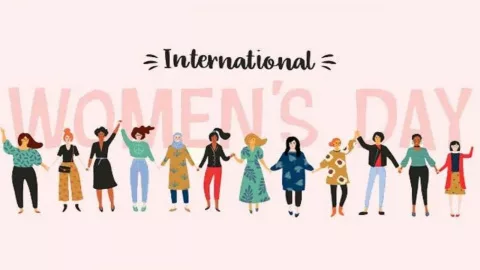International Women’s Day 2024: Observed annually on March 8th, International Women’s Day is more than just a celebration of women’s accomplishments; it serves as a rallying cry for gender equality. Discover everything you need to know about its 2024 theme, historical roots, significance, and beyond.
International Women’s Day 2024: International Women’s Day (IWD) is celebrated worldwide on March 8th each year, recognizing women’s social, economic, cultural, and political achievements. It serves as a reminder to accelerate efforts towards gender parity. The day not only celebrates women’s achievements and advancements but also emphasizes the ongoing fight for equality and the necessity of global advocacy and action.

International Women’s Day 2024: All you need to know, From Theme to History, Significance, and Beyond
On this day, numerous events are held worldwide on the auspicious occasion of International Women’s Day to spotlight the collaborative endeavors of individuals advocating for human rights in the ongoing quest for gender equality. As Gloria Steinem aptly expressed, “The story of women’s struggle for equality belongs to neither a single feminist nor any one organization but to the collective efforts of all who care about human rights.”
Here’s a comprehensive guide to International Women’s Day 2024.
International Women’s Day: Theme 2024
The United Nations has chosen ‘Invest in Women: Accelerate Progress’ as the theme for the year 2024, aiming to tackle economic disempowerment. Additionally, the campaign theme for this year is ‘Inspire Inclusion,’ emphasizing the importance of diversity and empowerment across all sectors. The campaign underscores the crucial role of inclusion in promoting gender equality and recognizes its significance in various spheres of society.

International Women’s Day: The Origin
International Women’s Day traces its roots back to the early 20th century, emerging from labor movements in North America and Europe. The inaugural National Women’s Day occurred in the United States on February 28, 1909, organized by the Socialist Party of America to honor the 1908 garment workers’ strike in New York, where women rallied against unfavorable working conditions.
In 1910, Clara Zetkin proposed International Women’s Day at the International Women’s Conference in Copenhagen. The proposal garnered unanimous support, leading to its first commemoration in 1911 across several European nations, with over a million individuals participating in advocacy for women’s rights.
Throughout its evolution, International Women’s Day has transformed into a universally acknowledged and celebrated occasion. The United Nations officially recognized the day in 1975, and by 1977, the UN General Assembly urged member states to designate March 8 as the UN Day for Women’s Rights and World Peace.
International Women’s Day: Significance
International Women’s Day holds significance in spotlighting critical issues like gender equality, reproductive rights, and violence against women. It serves as a platform for collective efforts and collaboration in advocating for women’s rights and empowerment. However, it also underscores the ongoing struggle for gender parity, with the World Economic Forum projecting that it will take more than a century to achieve full equality.
Beyond celebrating women’s achievements, International Women’s Day serves as a call to action for gender equality. It encourages reflection, advocacy, and action to dismantle barriers for women and girls worldwide.








